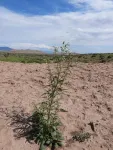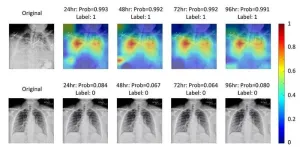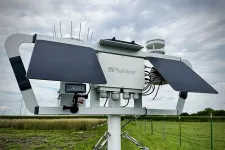(Press-News.org) Children’s views of inequality may be influenced by how its causes are explained to them, finds a new study by a team of psychology researchers. The work offers insights into the factors that affect how larger social issues are perceived at a young age and points to new ways to reduce bias toward lower-status economic groups.
“When making sense of social inequalities, adults may consider the structural forces at play—for example, people may cite policies related to legacy admissions when thinking about how disparities first arise,” says Rachel Leshin, a New York University doctoral student and the lead author of the study, which appears in the Proceedings of the National Academy of Sciences (PNAS). “But children don’t necessarily see differences in status in this way—and when children are prompted to consider the structural forces, they tend to interpret these structures differently from how adults do.”
“However, our work shows that children can think about these matters in a similar manner as adults do if the structures driving inequality are explained to them in specific ways,” she adds. “Such approaches, we found, also reduced the extent of bias children felt against a lower-income group relative to a higher-income group.” ”
It’s long been shown that children become aware of inequality from a young age and quickly develop status-related biases as a result. For example, they often view more positively those from high-status groups (e.g., those with more material resources or those who belong to groups that they associate with greater wealth) and, moreover, willingly accept group disparities.
In the PNAS study, Leshin and Marjorie Rhodes, a professor in NYU’s Department of Psychology, examined how children reason about economic inequality in order to understand how the explanations provided for an inequality shaped children’s responses to it, such as how they feel about a low-status group or whether they want to rectify the inequality. In doing so, the work sought to understand how these explanations could be used to reduce biased views against lower-status groups.
To do so, Leshin and Rhodes recruited more than 200 children, aged 5-10, to participate in an online study. In the study, children learned about two fictional groups—“Toogits” (a high-status group) and “Flurps” (a low-status group). The authors note that fictional groups are often used in testing children’s attitudes in order to diminish bias linked to “real-world” social categories. These groups were described as differing in wealth and resources, such as:
See this Flurp? This Flurp lives in this house. And you know what else? Grown-up Flurps have jobs that only pay them a little money. Because Flurps don’t have that much money, this Flurp only got a pair of socks for his/her birthday, and he/she didn’t get to have a birthday party at all.
The children were also shown images that represented where the two groups lived, with the Toogit shown in a nice, polished house and the Flurp shown in a less attractive house.
In order to unpack how the causes provided to explain the inequality shaped children’s responses to it, the researchers gave children one of three explanations for the inequality shown through the two fictional groups: one attributed it to structural causes and cited the high-status group as the structures’ creators (i.e., “… because of rules that [the high-status group] made up a long time ago”); another attributed it to structural causes but did not identify their creator (i.e., “… because of rules that were made up a long time ago”); and one, the control condition, didn’t provide an explanation at all (i.e., “... it’s been like that for a long time”).
The researchers sought to understand whether and to what extent these explanations would shape children’s responses to the inequality, including their level of bias against the low-status economic group.
The results showed that only the structural explanation that identified the high-status group as the catalyst responsible for the different circumstances of the two groups produced notable effects. Children in this condition reported lower levels of bias toward these fictional groups, perceived the status hierarchy as less fair, and opted to give more resources to the low-status group relative to those in the other two conditions.
By contrast, children who heard a structural explanation that did not cite the high-status group as a cause for these differences (instead citing a third-party—i.e., “the person who got to make the rules”) responded no differently than did those in the control condition who heard no explanation at all.
“In engaging with children about inequality, whether it’s linked to wealth or educational attainment, it’s important to not only identify a structural cause underlying a disparity, such as legacy admissions, but to also identify the group influential in the implementation of those structures,” explains Leshin. “We think these findings can be used to better understand how we can meaningfully engage with children about inequality.”
The research was supported by grants from the National Science Foundation (BCS-2017375) and the National Institutes of Health (1F31HD107965, R01HD087672).
END
New research finds way to reduce bias in children
Psychology study shows that focus on structural origins of inequality can diminish biased views of others’ economic status
2023-08-21
ELSE PRESS RELEASES FROM THIS DATE:
It all depends on the genetic diversity
2023-08-21
Plants are not exposed to herbivores without defenses. When an insect feeds on a leaf, thereby wounding it and releasing oral secretions, a signaling cascade is elicited in the plant, usually starting with a rapid increase in the amount of the plant hormone jasmonic acid and its active isoleucine conjugate. Jasmonic acid regulates various reactions in plants, including defenses against herbivores and responses to environmental stress.
Mutants with disadvantageous properties do not necessarily disappear
An important thesis of evolutionary theory is natural selection and the conclusion that mutants with disadvantageous properties disappear ...
UArizona Valley fever expert Galgiani to receive lifetime achievement award
2023-08-21
The Arizona Bioindustry Association announced that renowned Valley fever researcher John Galgiani, MD, professor and director of the Valley Fever Center for Excellence at the University of Arizona College of Medicine – Tucson, is the 2023 recipient of the AZBio Pioneer Award for Lifetime Achievement.
The Pioneer Award is the highest honor awarded by Arizona’s bioscience community and is extended to an Arizonan whose body of work has made life better for people at home and around the world. Galgiani’s four decades of Valley fever research, ...
University breaks ground on one-of-a-kind semiconductor facility
2023-08-21
The University of Arkansas celebrated an important milestone with the groundbreaking on a building that Chancellor Charles Robinson suggested might someday rival the U of A’s most iconic structure, Old Main, in significance to the university and the state of Arkansas.
Robinson and other university leaders, including University of Arkansas System President Don Bobbitt and members of the U of A System Board of Trustees, as well as researchers and industry leaders, gathered at the Arkansas Research and Technology Park in South Fayetteville to celebrate construction of the national Multi-User Silicon Carbide ...
Do prisons hold the key to solving the opioid crisis?
2023-08-21
With opioid overdose deaths surging in the United States, many communities are in desperate need of solutions to bring down the body count. Among the most promising is strengthening prison reentry programs for highest-risk users, a Rutgers-led study has found.
“For people who use drugs and have been in prison for several years, the reentry period can be chaotic and disorienting,” said Grant Victor, an assistant professor in the Rutgers School of Social Work and lead author of the study published in the Journal of Offender Rehabilitation.
“Closing ...
AI to predict critical care for patients with COVID-19
2023-08-21
The COVID-19 pandemic dealt a huge blow to healthcare systems and highlighted their major shortcomings. As of June 2023, there have been over 760 million confirmed cases of COVID-19, with almost 7 million deaths worldwide. During the major COVID-19 outbreaks, hospitals often had their intensive care units (ICU) running at full capacity for providing invasive mechanical ventilation to patients who were diagnosed as positive for COVID-19. These ICUs often operated with insufficient staff and intubation equipment.
One way to mitigate such problems is to accurately predict the prognosis ...
Simple blood test may predict future heart, kidney risk for people with Type 2 diabetes
2023-08-21
Research Highlights:
An analysis of a clinical trial of more than 2,500 people with Type 2 diabetes and kidney disease found that high levels of four biomarkers are strongly predictive for the development of heart and kidney issues.
People who took canagliflozin, a sodium glucose co-transporter 2 inhibitor (SGLT2 inhibitor), had lower levels of the four biomarkers compared to those who took a placebo over the three-year study period.
Treatment with canagliflozin helped to substantially reduce the risk of hospitalization for heart failure and other heart complications among patients considered to have the highest risk.
Embargoed until 1 p.m. CT/2 p.m. ET Monday, ...
Listening for “sounds” from the far corners of space
2023-08-21
Scientists spectacularly confirmed the existence of gravitational waves several years ago, but now they are searching the cosmos for new and different types of these waves that result from different objects in deep space.
Benjamin Owen, a professor in the Department of Physics and Astronomy at Texas Tech University, was recently awarded a three-year National Science Foundation (NSF) grant that aims to uncover and confirm additional types of gravitational waves.
“So far with gravitational waves we’ve seen what happens when you have ...
Agrela Ecosystems ignites innovation in data-driven agriculture
2023-08-21
ST. LOUIS, MO, August 21, 2023 – Agrela Ecosystems, a startup launched by Nadia Shakoor, PhD, principal investigator, at the Donald Danforth Plant Science Center announced the pilot launch of its flagship product, PheNodeTM. This milestone marks the first step towards a full-scale commercial release set for 2025. PheNode is an advanced, scalable environmental sensor platform designed to empower users with customizable data collection and the rapid integration of new technologies. Already creating a buzz, the platform is now collecting data and generating customer feedback, ...
PS gene-editing shown to restore neural connections lost in brain disorder
2023-08-21
MINNEAPOLIS/ST. PAUL (08/21/2023) — A new study from the University of Minnesota is the first to demonstrate the ability for gene therapy to repair neural connections for those with the rare genetic brain disorder known as Hurler syndrome. The findings suggest the use of gene therapies — an entirely new standard for treatment — for those with brain disorders like Hurler syndrome, which have a devastating impact on those affected.
The study was published in the Nature journal Scientific Reports.
Hurler syndrome, also known as mucopolysaccharidosis type I (MPS I), is a genetic disorder affecting newborns ...
Argonne receives funding to use AI and machine learning for nuclear physics research
2023-08-21
The U.S. Department of Energy (DOE) announced $16 million for 15 projects that will implement artificial intelligence (AI) methods to accelerate scientific discovery in nuclear physics research. DOE’s Argonne National Laboratory will lead two of those projects and be a collaborator on another.
These projects will use AI and Machine Learning (ML) tools and methods for nuclear physics experiments, simulation, theory and accelerator operation to expand and accelerate scientific reach.
“Artificial intelligence has the potential to shorten the timeline ...
LAST 30 PRESS RELEASES:
Low daily alcohol intake linked to 50% heightened mouth cancer risk in India
American Meteorological Society announces Rick Spinrad as 2026 President-Elect
Biomass-based carbon capture spotlighted in newly released global climate webinar recording
Illuminating invisible nano pollutants: advanced bioimaging tracks the full journey of emerging nanoscale contaminants in living systems
How does age affect recovery from spinal cord injury?
Novel AI tool offers prognosis for patients with head and neck cancer
Fathers’ microplastic exposure tied to their children’s metabolic problems
Research validates laboratory model for studying high-grade serous ovarian cancer
SIR 2026 delivers transformative breakthroughs in minimally invasive medicine to improve patient care
Stem Cell Reports most downloaded papers of 2025 highlight the breadth and impact of stem cell research
Oxford-led study estimates NHS spends around 3% of its primary and secondary care budget on the health impacts of heat and cold in England
A researcher’s long quest leads to a smart composite breakthrough
Urban wild bees act as “microbial sensors” of city health.
New study finds where you live affects recovery after a hip fracture
Forecasting the impact of fully automated vehicle adoption on US road traffic injuries
Alcohol-related hospitalizations from 2016 to 2022
Semaglutide and hospitalizations in patients with obesity and established cardiovascular disease
Researchers ‘listen in’ to embryo-mother interactions during implantation using a culture system replicating the womb lining
How changing your diet could help save the world
How to make AI truly scalable and reliable for real-time traffic assignment?
Beyond fragmented markets: A new framework for efficient and stable ride-pooling
Can shape priors make road perception more reliable for autonomous driving?
AI tracks nearly 100 years of aging research, revealing key trends and gaps
Innovative techniques enable Italy’s first imaging of individual trapped atoms
KIER successfully develops Korea-made “calibration thermoelectric module” for measuring thermoelectric device performance
Diversifying US Midwest farming for stability and resilience
Emphasizing immigrants’ deservingness shifts attitudes
Japanese eels, climate change, and river temperature
Pusan National University researchers discover faster, smarter heat treatment for lightweight magnesium metals
China’s 2024 Gastroenterology Report: marked progress in endoscopy quality and disease management
[Press-News.org] New research finds way to reduce bias in childrenPsychology study shows that focus on structural origins of inequality can diminish biased views of others’ economic status



